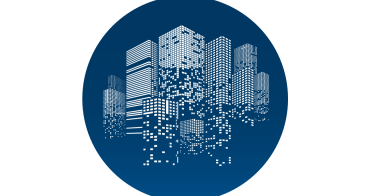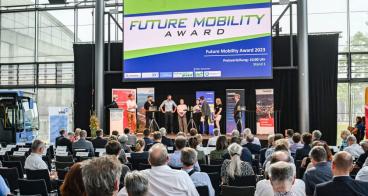Revolutionising drone services: How 5G technology is paving the way
As the world continues to digitise and automatise, drones are becoming increasingly important tools for businesses across various industries. Drones can be used for a wide range of applications, including monitoring crops, delivering medical supplies, and inspecting infrastructure. However, to fully harness the potential of drones, we need to overcome some key challenges, such as ensuring safe and efficient drone operations, and developing systems to manage drone traffic.
One of the key challenges facing drone operators is the need for reliable, low-latency connectivity. 5G networks offer the potential to overcome these challenges, providing high-speed, low-latency connections that can support a wide range of drone applications.
Recently, GSMA published a whitepaper "5G Technology as the Backbone for Commercial Drone Usage" that explores the use of 5G networks to enable safe and efficient drone operations. In the whitepaper, Ericsson Drone Mobility describes use cases in which drones can be used for inspection and monitoring of critical infrastructure, such as power lines. The drones are equipped with cameras and sensors that capture high-quality data, which is transmitted in real-time over a 5G network. This allows operators to quickly identify potential issues and take action to prevent downtime and ensure safety.
The whitepaper describes the potential for 5G networks to support beyond-visual-line-of-sight (BVLOS) drone operations, which are currently limited by the need for a human operator to maintain visual contact with the drone. With 5G connectivity, drones could be operated remotely, allowing for a wider range of applications and increasing operational efficiency.
Overall, the findings of the whitepaper based on the work Ericsson Drone Mobility did along with mobile operator TDC Net Denmark highlight the tremendous potential of 5G networks to support safe and efficient drone operations. As businesses across various industries continue to explore the use of drones, it is clear that the development of reliable, low-latency connectivity is essential for the success of these applications.
6 use cases how 5G technology can enable more advanced air mobility (AAM) solutions:
- Network connectivity utilising slicing and control: A 5G network can provide a predictable network resource for stable drone control signals and live video streaming during flights.
- 5G network service creation and exposure: Dynamic control of QoS for individual drones using network exposure APIs, allowing upgrades or limitations in real-time.
- Drone network identification and profile management: Regulators require drones to be electronically identifiable for safety and security reasons. A new network identifier for drones called Networked Remote ID (NRID) provides a method for a drone to be automatically identified by both the telecoms network and the unmanned aircraft system (UAS) service supplier (USS).
- Remote control: A cellular network can be used to remotely control drones over longer distances than the wireless technology used today, allowing for more efficient inspections and reducing the need for ground pilots to be educated about different inspections.
- Drone location tracking: A cellular network can be used as a secondary positioning system to enable position redundancy and network validation of the drone flight, reducing flight risk and making it easier to retrieve a flight permission.
- Geographic SIM density map: A 5G network can provide SIM density information to create a real-time map of ground risk exposure for drone flights, which can be used for pre-flight risk assessment and mitigation. This lowers the criteria for drone take-off and supports compliance with safety regulations.
Learn more about how 5G enables AAM by accessing the full whitepaper, jointly developed by GSMA Foundry, Ericsson Drone Mobility and TDC net.
The authors: Kapil Mittal (CEO) and Fredrik Flyrin (CTO) are the Co-founder of Ericsson Drone Mobility. Ericsson Drone Mobility, a unique innovation is driving convergence of Telecom and Aviation leveraging telecom network intelligence to fly drones securely and safely, beyond visual line of sight, opening up many exciting new use cases.
Published on 11 April 2023.






